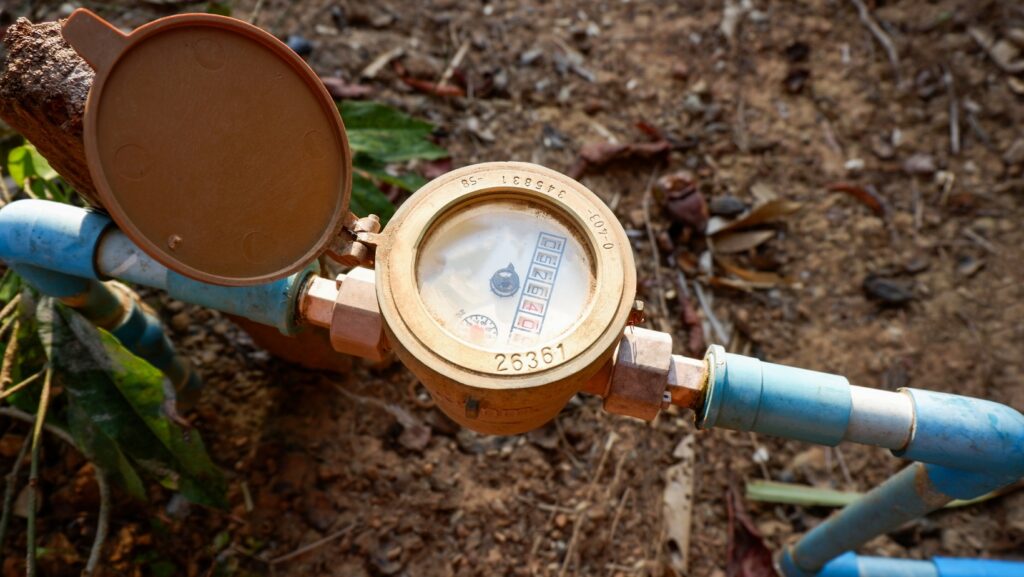Water is an essential resource for every household, and understanding how to manage it properly can lead to significant savings on your water bill. One of the first steps toward better water management is knowing how to read your water meter. Water meters are devices used by utility companies to measure the volume of water you consume, and they play a key role in determining your monthly or quarterly water bill. Knowing how to read a water meter accurately will allow you to monitor your usage, detect leaks early, and ensure that you’re being charged fairly.
In this article, we’ll guide you through the process of reading a water meter, explain different types of water meters, and offer tips on how to track your water usage efficiently.
Understanding the Water Meter
Before diving into how to read a water meter, it’s important to understand what a water meter is and why it’s crucial for your water billing. A water meter measures the amount of water that flows into your home from the main supply. It tracks your water consumption, which your water utility company then uses to calculate your bill.
Water meters come in various designs, but they generally consist of the following components:
- Dial or digital display: Displays the water usage.
- Cubic foot or gallon markers: Indicates the units of water consumed.
- Registers: Records the amount of water passing through the meter.
Most meters will use either a dial display, a digital display, or a combination of both.
Types of Water Meters
There are several different types of water meters, and understanding the type installed in your home is essential when it comes to reading your water usage correctly. Here are the common types:
1. Analog (Mechanical) Meters
Analog meters use a series of dials to display your water usage. The dials typically rotate in a clockwise direction as water flows through the meter. To read this type of meter:
- Start by noting the number on the farthest dial (usually on the right).
- Read the remaining dials from right to left, noting the numbers indicated on each dial.
- If the hand is between two numbers, always record the lower number.
2. Digital Meters
Digital meters are easier to read, as they display the water consumption directly in numeric form on a digital screen. Digital meters may also show additional information, such as the flow rate or total usage. These meters are simpler to read because you just have to note the number displayed.
3. Smart Meters
Smart meters are a more advanced version of digital meters. These meters automatically send data to the utility company, allowing for more accurate billing and reducing the need for manual readings.

They often include features that let you monitor your water usage in real-time through an app or online portal.
How to Read a Water Meter
Now, let’s get to the core of the matter: how to read a water meter. Follow these simple steps to read your water meter accurately:
-
Locate Your Meter
First, find your water meter. Water meters are typically located outside your home, either near the street or in a meter box buried in your yard. In some cases, meters can be found in the basement or utility room, particularly in apartments or older homes.
-
Check the Dial or Digital Display
If you have an analog meter, you will see a series of dials. Each dial represents a digit in the reading, with the smallest dial representing the smallest unit (usually 1/10th of a gallon or cubic foot). With digital meters, the water usage will be displayed clearly on the screen in gallons or cubic feet.
-
Read the Numbers
On an analog meter, carefully note the number each dial is pointing to. If a dial is between numbers, round down to the lower number. In a digital meter, simply record the number displayed on the screen.
-
Understand the Units
Most water meters will measure in either gallons or cubic feet. Be sure to know which unit your meter uses, as this will affect how you calculate your usage and bill.
-
Track Your Consumption
After reading your meter, record the current number and compare it with your last reading. The difference between the two readings will show how much water you’ve used during the billing cycle.
How to Keep Track of Your Water Bill
Keeping track of your water bill starts with understanding how to read a water meter. However, it doesn’t stop there. Here are some actionable tips to help you track your water usage and keep your bills under control:
1. Monitor Your Meter Regularly
Regularly checking your water meter will help you spot unusual usage patterns, indicating potential leaks or inefficiencies. Make it a habit to check your meter once a month, especially before and after periods of high water use, like the summer months.
2. Compare Readings
Comparing your meter readings to your previous bills can help you determine whether your usage has increased, decreased, or remained the same. If your readings are consistently higher than normal, it may be time to investigate for leaks or faulty appliances.
3. Look for Leaks
Leaks can cause your water bill to spike unexpectedly. One way to check for leaks is to turn off all water sources in your home (including appliances) and monitor the meter for any movement.

If the meter continues to run, there may be a hidden leak somewhere.
4. Use Water-Efficient Fixtures
Installing water-saving devices, such as low-flow toilets, showerheads, and faucets, can significantly reduce your water consumption. These fixtures can help you keep your water usage low, which directly translates to lower bills.
5. Use a Water Usage App
Some utility companies offer apps that sync with your smart water meter, allowing you to track your water usage in real-time. Alternatively, there are third-party apps that can help you monitor your consumption and set usage goals.
6. Track Your Water Usage Against the Season
Water consumption often varies based on the time of year. For example, during the summer, people tend to use more water for outdoor activities, such as gardening or filling a pool. Compare your seasonal usage patterns to understand the cause of any spikes in your bill.
Why Understanding Your Water Meter Is Important
Knowing how to read a water meter and keep track of your water bill offers numerous benefits:
- Prevent Overcharging: By understanding your water meter, you can ensure that you’re being billed accurately and prevent the utility company from overcharging you for water you didn’t use.
- Early Leak Detection: Regularly monitoring your water meter helps identify leaks early, potentially saving you hundreds of dollars in unnecessary water consumption and repair costs.
- Water Conservation: By tracking your usage, you can become more conscious of your water habits, ultimately leading to water conservation and more sustainable practices.
- Budgeting: Keeping track of your water bill allows you to adjust your water usage in advance, making it easier to budget for utilities and manage your household expenses.
Conclusion
Learning how to read a water meter is an important skill that will not only help you keep track of your water bill but also allow you to identify potential issues like leaks or inefficient appliances early. With the right tools, a little attention, and regular monitoring, you can reduce your water consumption, keep your bills in check, and contribute to overall water conservation. So, next time you check your water meter, you’ll be fully equipped to understand the numbers and make smarter decisions for your home and your wallet.

